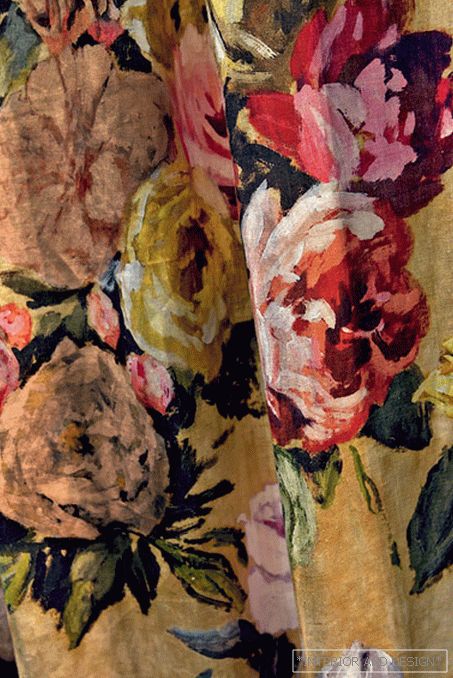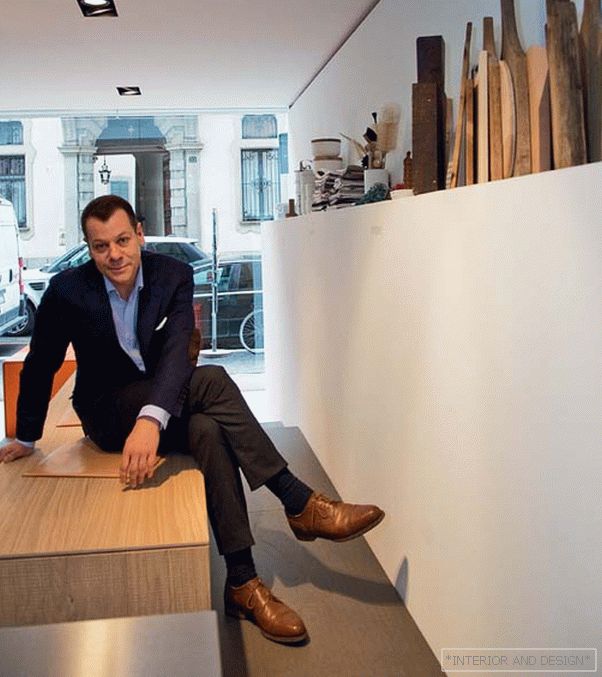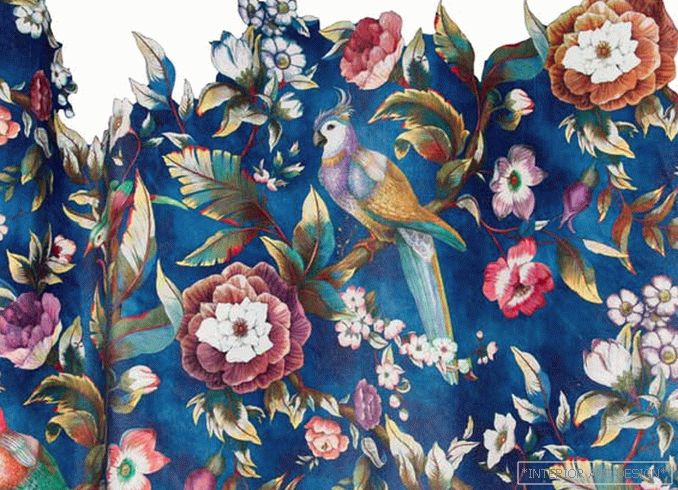Shebbi-chic, that is, literally, "shabby chic" is a fashionable textile trend
 Passing the gallery
Passing the gallery Magazine: Decor N7 (206) 2015
In the modern interior there is a whole palette of styles, poetically glorifying the “old good time” and therefore can not do without the nobly worn furniture. Tuscan style, Provence, Gustavian style (Swedish version of Provence), eclecticism in the spirit of retro — this is a list that can be continued if desired. Textile manufactories have been supplying fabrics to the Russian market for 15–20 years, and carpet workshops with carpets with the effect of aging. The most sophisticated of the interiors in classical styles over the years have been decorated with fabrics magically stylized as antique. However, over the past year or two, the textile trend, which, for convenience, can be called “chebbi-chic”, has simply flourished, not limited to familiar effects: worn fabric and faded color.
The fact is that a whole “bush” of tendencies has appeared, which are not at all connected with imitation of ancient fabrics. So, the material can imitate a picture, a plastered wall, the surface of a stone and even fractures of a rock. One of these tendencies — a print with the effect of an old fresco (or a painting) —with supposedly peeling paint or plaster. Images can be very different: flowers, ornaments, drawings of an abstract nature, as if appearing on the surface.
Close to this trend is another (let's call it "The Beginning") - fabrics whose surface resembles earth, sand, stone, and ancient faults of rocks. This is no longer prints, but a material with a complex structure and texture, for example, a certain way shears velvet, fabrics with woven metal thread, fabrics with a 3D effect. Another closest trend: the fabric imitates a worn metal surface with a base appearing from under it. The most fashionable metallic shades are copper and gold. Moreover, gold is faded, and copper — with traces of moisture and air.
Who would have guessed that such a fashionable artistic technique as a gradient (the transition of shades from light to dark within the same color), if used in a panne, also helps to create the effect of aging. (Panne is velvet with a nap smoothed in one direction.) The lightest shades seem to fade with time, and the iridescence of the fabric finally erases the boundaries between them. Another fashionable textile has the effect of velvet pile, gilding, wiped base, badly printed prints. Carpets today are subjected to a special treatment — with acid, fire, and water, in order to achieve not even an effect, but an affect of ancient antiquity. In addition to fabrics and carpets, luxury brands are now producing and wallpaper with the effect of aging. So now the walls are involved in the process of creating a sensual, as if vibrating atmosphere, when time seems to be touched.
Read the full text in paper or



